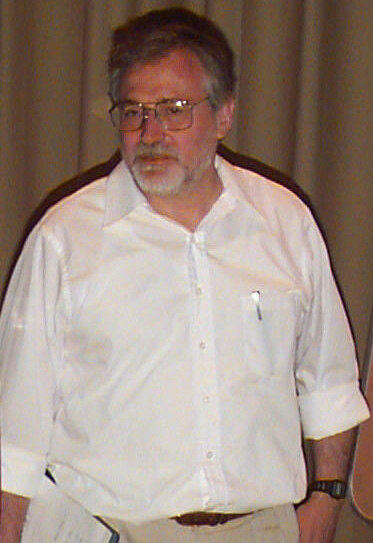.

There is also a Physician George Nicholas Papanicolaou (13-May-1883 – 19-Febraury-1962)
Papanicolaou, was born 1943 in Athens, Greece. He received his bachelor's degree in engineering at Union College in Schenectady, New York, and his master's degree and Ph.D. degree in mathematics at the Courant Institute at New York University, where he became a full professor in 1976 and, three years later, the director of the Division of Wave Propagation and Applied Mathematics. From 1990 to 1992, he was a visiting member of the Institute for Advanced Study in Princeton. In the summer of 1993, he moved to Stanford University, where he is a professor of mathematics. In the mid-1970s, with Alain Bensoussan, now president of the French Institute National des Recherche Informatique et Automatique, and Jacques-Louis Lions of the College de France, Papanicolaou pioneered the mathematical study of the effective properties of materials. This concept, which has come to be known as "homogenization," has had applications in the study of composite materials and complex fluids. Papanicolaou, who describes himself as a "user of turbulence theory," has also done seminal work in the mathematical study of wave propagation in reflective seismograms and of the focusing of high intensity laser beams when they pass through inhomogenous media.
Modern applied mathematics seeks to understand and quantify a broad range of phenomena throughout the physical, geophysical, biological, engineering, industrial, and economic worlds. Due to the inherent complexity and random nature of many of the phenomena and systems which are studied, the use of techniques which directly take into account and exploit their stochastic properties to understand behavior are very powerful and widely used. Few applied mathematicians over the past 30 years have had a greater impact on developing and applying such techniques to a wide array of problems as George Papanicolaou. Through his deep influence on students, postdoctoral associates, junior faculty, and senior colleagues, George Papanicolaou has advanced applied mathematics, and in particular the use of stochastic techniques, in a unique and far reaching manner.
From his personal CV:
Department of Mathematics
Stanford University
Stanford CA 94305
Phone: (650)7232081 Fax: (650)7254066
Internet: papanicolaou@stanford.edu
URL: http://georgep.stanford.edu
Birth Date: January 23, 1943. Married, with three children.
Birthplace: Athens, Greece. U.S. Citizen.
Education
Ph.D 1969, M.S 1967, Mathematics, New York University, Courant Institute, B.E.E 1965, Union
College, Schenectady N.Y.
Employment
New York University, Courant Institute: Assistant Professor, 1969-1973, Associate Professor, 1973-
1976, Professor, 1976-1993. Director, Division of Wave Propagation and Applied Mathematics,
Courant Institute 1979-1993. Professor, Stanford University, 1993-1997. Robert Grimmett Profes-
sor of Mathematics, 1997-present.
Visiting Member
INRIA, Rocquencourt, France, 12/74-2/75, and Observatoire de Nice France, 3/75. Also, INRIA, Rocquencourt, France 9/76-1/77. Visiting Associate Professor: Cornell University (Spring term), 1976-77. Visiting Scientist: Exxon Research Corp. 10/83-1/84. Visiting Professor: Univ. of Paris Dauphine 3/84. Visiting Member: Institute for Advanced Study, Princeton, 9/90-5/92.
Honors and Awards
Alfred P. Sloan Fellow, 1974-1976. John Simon Guggenheim Fellow 1983-1984. Invited speaker, International Congress of Mathematicians, 1986. Honorary Doctor of Science, University of Athens, 1987. Invited speaker, International Congress of Mathematical Physics, 1994. Invited Plenary speaker, International Congress of Mathematicians, 1998. Fellow of the American Academy of Arts and Sciences. Member of the U.S. National Academy of Sciences. Sackler distinguished visitor, Tel Aviv University, 2000. Invited plenary speaker British Mathematical Council, 2002. Invited plenary speaker SIAM 50th anniversary meeting, 2002. Invited plenary speaker International Congress of Industrial and Applied Mathematics, 2003.
Professional Societies American Mathematical Society (AMS), American Physical Society and Society for Industrial and Applied Mathematics.
| Ancient Greece
Science, Technology , Medicine , Warfare, , Biographies , Life , Cities/Places/Maps , Arts , Literature , Philosophy ,Olympics, Mythology , History , Images Medieval Greece / Byzantine Empire Science, Technology, Arts, , Warfare , Literature, Biographies, Icons, History Modern Greece Cities, Islands, Regions, Fauna/Flora ,Biographies , History , Warfare, Science/Technology, Literature, Music , Arts , Film/Actors , Sport , Fashion --- |

